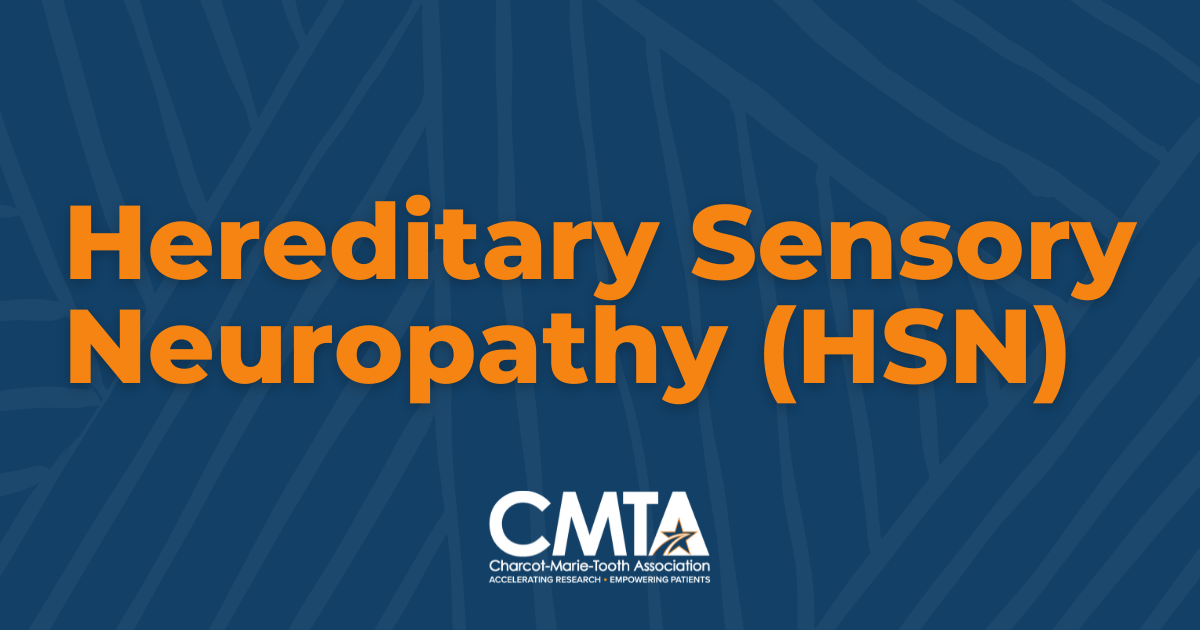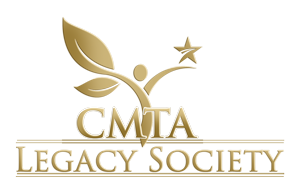Hereditary Sensory Neuropathy (HSN)

What is Hereditary Sensory Neuropathy?
HSNs are rare disorders with progressive distal sensory loss in the lower limbs. They typically affect sensory nerves with little to no involvement of the motor nerves. HSNs are an axonal neuropathy and are either autosomal dominant or autosomal recessive in inheritance. Hereditary Sensory and Autonomic Neuropathy (HSAN) is characterized similarly with the addition of the involvement of autonomic nerves.What causes HSN?
More than half of the genes associated with the HSNs have not yet been identified. Patients may receive a diagnosis of HSN without a known genetic cause. HSN1 mutations are usually inherited in an autosomal dominant pattern (from affected parent to child). In rare cases, de novo mutations or mutations without a family history may occur.What are the Symptoms of HSN
Symptoms may include:
- loss of sensation the distal portions of the arms and legs, and especially the hands and feet.
- chronic skin erosions, ulcers/open sores, or slow-healing blisters
- burning or tingling sensations in the hands or feet
- spontaneous shooting pains in feet, legs, hands or shoulders
- highly arched feet (pes cavus)
- flat feet (pes planus)
- hammertoes
- Recurring fungal or bacterial infections of the toenails
- excessive sweating (hyperhidrosis), reduced sweating (hypohidrosis) or lack of sweating (anhidrosis). These are less common in HSN1s and more common in other HSN types.
- low blood pressure (hypotension)
- sensorineural hearing loss (rare)
When do the symptoms of HSN start?
Onset can be anywhere from childhood to 60 years old, although HSN1 does not usually present before teenage years.Who does HSN affect?
HSN1 affects males and females in equal numbers, with a prevalence estimated at close to 2 in 1,000,000 people. HSN often goes undiagnosed or misdiagnosed, making true frequency difficult to determine.
What are the HSN Subtypes?
HSN1
HSN1 is caused by mutations in specific genes and is inherited in an autosomal dominant pattern. There are 6 subtypes of HSN1 designated A through F. Each subtype is associated with a different gene.
-
-
HSN1A
 HSN1A is the best known form of HSN. HSN1A is caused by a mutation in the SPTLC1 gene. Though HSN1A, HSN1C, and CMT2B are very similar, HSN1A is associated with a higher level of neuropathic pain. Sensorineural hearing loss is rare with an onset in middle to late adulthood.
HSN1A is the best known form of HSN. HSN1A is caused by a mutation in the SPTLC1 gene. Though HSN1A, HSN1C, and CMT2B are very similar, HSN1A is associated with a higher level of neuropathic pain. Sensorineural hearing loss is rare with an onset in middle to late adulthood.
-
-
-
HSN1B
 Individuals with HSN1B typically will not have foot ulcers and may experience gastroesophageal reflux and cough in adulthood. The gene associated with HSN1B is believed to be located on the chromosome 3p24-p22, but has not yet been found.
Individuals with HSN1B typically will not have foot ulcers and may experience gastroesophageal reflux and cough in adulthood. The gene associated with HSN1B is believed to be located on the chromosome 3p24-p22, but has not yet been found.
-
-
-
HSN1C
 HSN1C is caused by mutations in the SPTLC2 gene, located on chromosome 14q24. HSN1C is similar to HSN1A and CMT2B with some slight variations. Individuals may experience sensory symptoms such as burning or tingling sensations in the hands or feet.
HSN1C is caused by mutations in the SPTLC2 gene, located on chromosome 14q24. HSN1C is similar to HSN1A and CMT2B with some slight variations. Individuals may experience sensory symptoms such as burning or tingling sensations in the hands or feet.
-
-
-
HSN1D
 HSN1D is caused by the ATL1 gene, which also causes a central nervous system disease called hereditary spastic paraparesis (HSP). Those who get HSN1D often have central nervous system signs such as brisk reflexes.
HSN1D is caused by the ATL1 gene, which also causes a central nervous system disease called hereditary spastic paraparesis (HSP). Those who get HSN1D often have central nervous system signs such as brisk reflexes.
-
-
-
HSN1E
 HSN1E typically has a late onset with a mean age of 37 years. It presents with some or all of the following symptoms: hearing loss, sensory neuropathy, and cognitive decline (dementia). HSN1E is caused by mutations in the DNMT1 gene.
HSN1E typically has a late onset with a mean age of 37 years. It presents with some or all of the following symptoms: hearing loss, sensory neuropathy, and cognitive decline (dementia). HSN1E is caused by mutations in the DNMT1 gene.
-
-
-
HSN1F
 HSN1F is due to the gene ATL3 on chromosome 11q12.3-q13.1.
HSN1F is due to the gene ATL3 on chromosome 11q12.3-q13.1.
-






 HSN1A is the best known form of HSN. HSN1A is caused by a mutation in the SPTLC1 gene. Though HSN1A, HSN1C, and CMT2B are very similar, HSN1A is associated with a higher level of neuropathic pain. Sensorineural hearing loss is rare with an onset in middle to late adulthood.
HSN1A is the best known form of HSN. HSN1A is caused by a mutation in the SPTLC1 gene. Though HSN1A, HSN1C, and CMT2B are very similar, HSN1A is associated with a higher level of neuropathic pain. Sensorineural hearing loss is rare with an onset in middle to late adulthood.
 Individuals with HSN1B typically will not have foot ulcers and may experience gastroesophageal reflux and cough in adulthood. The gene associated with HSN1B is believed to be located on the chromosome 3p24-p22, but has not yet been found.
Individuals with HSN1B typically will not have foot ulcers and may experience gastroesophageal reflux and cough in adulthood. The gene associated with HSN1B is believed to be located on the chromosome 3p24-p22, but has not yet been found.
 HSN1C is caused by mutations in the SPTLC2 gene, located on chromosome 14q24. HSN1C is similar to HSN1A and CMT2B with some slight variations. Individuals may experience sensory symptoms such as burning or tingling sensations in the hands or feet.
HSN1C is caused by mutations in the SPTLC2 gene, located on chromosome 14q24. HSN1C is similar to HSN1A and CMT2B with some slight variations. Individuals may experience sensory symptoms such as burning or tingling sensations in the hands or feet.
 HSN1D is caused by the ATL1 gene, which also causes a central nervous system disease called hereditary spastic paraparesis (HSP). Those who get HSN1D often have central nervous system signs such as brisk reflexes.
HSN1D is caused by the ATL1 gene, which also causes a central nervous system disease called hereditary spastic paraparesis (HSP). Those who get HSN1D often have central nervous system signs such as brisk reflexes.
 HSN1E typically has a late onset with a mean age of 37 years. It presents with some or all of the following symptoms: hearing loss, sensory neuropathy, and cognitive decline (dementia). HSN1E is caused by mutations in the DNMT1 gene.
HSN1E typically has a late onset with a mean age of 37 years. It presents with some or all of the following symptoms: hearing loss, sensory neuropathy, and cognitive decline (dementia). HSN1E is caused by mutations in the DNMT1 gene.
 HSN1F is due to the gene ATL3 on chromosome 11q12.3-q13.1.
HSN1F is due to the gene ATL3 on chromosome 11q12.3-q13.1.